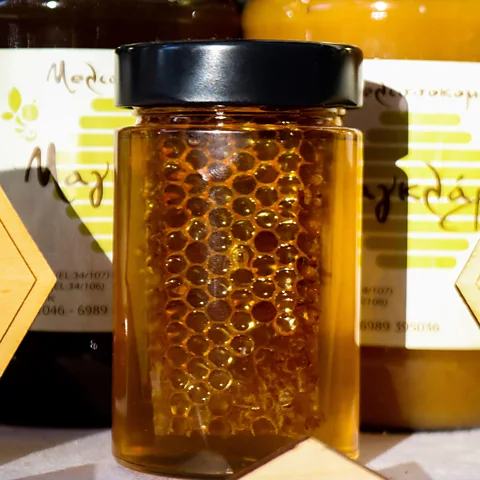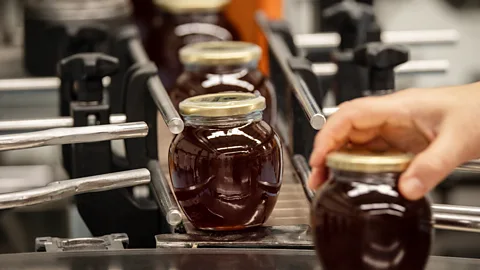The chemical secrets that help keep honey fresh for so long
When we say that food has spoiled, what we actually mean is that something else has got to it first, something microscopic. Bacteria, fungi, and moulds are present in at least low numbers in many foods, and a number of the procedures humans use to preserve food are designed to discourage these creatures consuming it.

 Alamy
Alamy
Many of these microorganisms tend to prefer moist conditions, higher (but not too high) temperatures, a mellow pH, and plenty of oxygen around to use in their metabolism. Dehydrating meat or fruit, then, deprives them of water. Cooking food to a high heat and then moving it into the fridge for storage first kills off many bugs and puts a damper on the growth of any left behind. Suspending food in a pickling mixture wards off all but the most acid-loving creatures. Sealing something in a jar limits the oxygen they have access to.
We are always fighting a losing battle against these organisms
Even food that's been put through a gauntlet of preservation procedures usually has a limited shelf life, as you might know if you have ever opened a jar of butterscotch sauce from the back of grandma's fridge, sealed in 1985, to find a thick carpet of fuzz within. (Don't ask me how I know.)
We are always fighting a losing battle against these organisms, and whether it's a whiff of vinegar that tells us the Lactobacillus has had its way with the orange juice, or black mould spots on the inside wall of the peanut butter jar, the signs of their presence are often unsubtle, and unavoidable.
But honey is an unusual case, and here is why. It's made by honeybees from flower nectar, and starts out as a warmish, watery, sugary fluid, the kind of thing that seems like it would be the purest bacteria bait. The bees concentrate the nectar on the way to the hive, removing some of the water, use enzymes to raise the acid content in the fluid discouraging some forms of microorganisms from growing, and break down the sugars into simpler ones, then decant the stuff into honeycomb chambers.

 Getty Images
Getty Images
Next, they do something remarkable: they start to fan the honey with their wings. The fanning slowly evaporates the remaining water, like an oscillating fan evaporating sweat from your skin, so a substance that was once about 70% or 80% water sees that number drop and drop and drop.
Fully ripened honey typically has a water content between about 15% and 18%. In fact, the proportion of sugar molecules to water is so enormous that it would not be physically possible to dissolve that much sugar into that much water, without a process like the one honeybees use.
There is plenty of sugar there, and of course microorganisms would love to have a go at it. But with so little water – and the acidity providing an additional disincentive – they simply can't survive. Seal honey in a jar, to limit the availability of oxygen, and there's another barrier to growth.
This doesn't mean that honey can withstand all challenges to freshness. Once a jar of honey is open, its surface is being regularly exposed to the air, and dipping licked spoons in will bring bacteria and moisture that weren't there when the jar was sealed.
But take charge of the situation by adding water, add your own specially chosen microorganism, and you get mead – a type of spoilage that few would argue with on a hot day, sitting in the shade.
For more science, technology, environment and health stories from the BBC, follow us on Facebook, X and Instagram.













